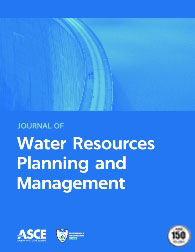The Impact of Youth Education on Green Stormwater Infrastructure Recommendations to Increase Equity and Resilience in Marginalized Flood-Prone Communities

Reckner, M., Tien, I., Smith, S., Omunga, P., Alemdar, M., and Hyde, A., “The Impact of Youth Education on Green Stormwater Infrastructure Recommendations to Increase Equity and Resilience in Marginalized Flood-Prone Communities,” ASCE Journal of Water Resources Planning and Management, Vol. 150, No. 9, September 2024
Abstract — Marginalized communities disproportionately experience the impacts of climate change, including more intense flooding and longer recovery times from disasters. Youth, particularly those belonging to marginalized communities, are consistently underrepresented in infrastructure planning decisions despite being the group most impacted by the long time scales of climate change, water management, and community infrastructure decisions. This paper investigates the novel perspectives that youth bring to planning processes and resulting impacts on recommendations for green stormwater infrastructure solutions to address flooding and community-scale factors important to achieving disaster resilience. Particular attention is paid to the infrastructure benefits prioritized by youth and characteristics of selected locations for infrastructure solutions. Further, the capabilities possessed by youth to effectively advocate for specific community infrastructure changes are not well researched, and the education and resources required to transform youth advocacy into action are not well understood. Through mixed methods, including quantitative and qualitative data and analysis, this paper explores the impact of youth education on building advocacy and the ability to create implementable stormwater infrastructure designs. The research is based on the development and implementation of a new interdisciplinary program called Youth Advocacy for Resilience to Disasters (YARDs). Funded by the National Science Foundation, the YARDs program teaches youth about natural disasters, resilience, data communication, green infrastructure, and presentation skills. The curriculum was developed by interdisciplinary researcher teams, combining civil engineering, sociology, urban planning, digital media, and education research. The program was piloted as a weeklong summer program for middle school students, and later implemented as a semester-long program. Both implementations focused on students developing green infrastructure recommendations that address flooding and other student-identified risks to communicate to community decision makers. The methods are readily transferable to other potential youth programs in areas impacted by flooding with expansion to additional communities facing different combinations of disasters.
Leave a Reply